Summaries of speech therapy classes. Abstract of speech therapy classes in elementary school

Abstract lessons by speech therapies
Subject : Differentiation sounds [ from ], [ w ].
purpose : Teach to distinguish sounds [c], [w] by ear.
Tasks:
Educational: to teach to distinguish sounds [c], [w] by ear in syllables, words, in phrases, to read syllables with these sounds, to fix the correct articulatory way of sounds [c] - [w].
Corrective : develop articulatory, fine and general motor skills, phonemic hearing, coherent speech, develop inflection and word formation skills.
Educational: to cultivate a culture of behavior in the classroom, respect for didactic material,foster interest in occupation
Plan:
Introduction
1. Org. moment (2-4 min)
Main part
1. Topic post (2 min)
2. Comparison of articulation of sounds (2 min)
3. Characterization of sounds (2 min)
4. Game with arrows (for the development of phonemic hearing) (2 min)
5. The game "Change the word" (inflection) (2 min)
6. Physical education (exercise is aimed at the development of general motility) (2 min)
7. Pronunciation of sounds [c], [w] in pure language (exercise for the development of coherent speech) (3 min)
8. Pronunciation of sounds [c], [w] in rhymed phrases. Word formation (3 min)
9. The game "Lay out things" (the exercise is aimed at developing coherent speech) (2 min)
10. Reading syllables (2 min)
11. Self-massage of hands and fingers (5 min)
Final part
Summing up (2 min)
The schedule of classes is 40 minutes.
Course progress:
Introduction
1. Org. moment .
Speech therapist: “Imagine the children that we are now in the forest. Show how big the trees are. ”
Children raise their hands.
Speech therapist: "a warm breeze blew shh, leaves rustled."
Children quickly and quickly move their fingers.
Speech therapist: "A cold wind blew s-s-s, pines swayed."
Children sway and wave their hands.
Speech therapist: "The wind died down - neither leaves nor branches move."
Children are relaxing.
Speech therapist: "And now they have quietly sat down."
Children sit down.
Main part
Articulation gymnastics:
Speech therapist: And now we will perform exercises for the lips and tongue (according to the oral instructions and showing the speech therapist, children perform the articulation gymnastics “Smile tube”, “Punish the naughty tongue”, “Swing”, “We clean the teeth”, “Fungus”, ” Cup",
Breathing exercises pinwheel
1. Topic post :
Speech therapist: "How did the leaves rustle from the warm breeze"?
Children: "Shhh."
Speech therapist: "How did the cold wind blow?"
Children: "S-s-s."
Speech therapist: "Today we will repeat the sounds [s], [w]."
2 . Sound articulation comparison:
Speech therapist: “Let's remember how to pronounce the sound [s]. Need to smile. Rest the wide tip of the tongue in the lower teeth. Put a palm to your mouth, a cold stream of air should come out. ”
Children make a sound [s].
Speech therapist: “And now we’ll pronounce the sound [w], for this you need to open your mouth, round the lips and slightly extend them forward, raise a wide tongue and make a“ cup ”, make a sound [w]. Put a palm to your mouth, a warm stream of air should come out. ”
Children make a sound [w]
3. Characterization of sounds .
Speech therapist: “Let's remember what sound [s]”?
Children: “-He is a consonant, because exhaled air in the mouth meets an obstruction; deaf because the voice does not ring; may be hard as a nut and soft as a wool "
Speech therapist: “Well done! And the sound [w]? ”
Children: “He is a consonant, because exhaled air meets an obstruction in the mouth; deaf because the voice does not ring; it is always hard as a nut. ”
We conclude .
whatof common in the soundsw-sh ? They are consonants, deaf.
Than theyare different?
When pronouncing a soundfrom lips are smiling, the tip of the tongue rests on the lower teeth; the air stream is cold. When pronouncing a soundw lips extended forward by a tube, tongue raised to the palate with a cup; warm breath
4. Game with arrows (The exercise is aimed at developing phonemic hearing).The schemes [C] - [W] - are inserted.
Speech therapist: “Everyone has cards with arrows on the tables. Now we will play with the sounds [s], [w]. I will call syllables first, and then words, if you hear a sound [s] - pick up a card with an arrow that shows down. If you hear the sound [w] - raise the card with the arrow that points up. " Syllables: sha, sa, mustache, shu, so, ash. Words: power, bag, power, nose, mouse, mustache, ears.
Children perform the task.
5. The game "Change the word" (inflection)
Speech therapist: “I will name the words. If a sound [c] is heard in a word, replace it with [w] and a new word will be obtained. For example: mustache - ears. "
Children: “A day is a joke, a helmet is a porridge, a bowl is a bear, a rat is a roof, a cape is a mouse, a fable is a tower.”
Speech therapist: "Well done."
6. Physical education (exercise is aimed at the development of general motility).
On the shelf of our funny toys,
(standing, hands on his belt)
Funny hedgehogs and funny frogs.
(walking in place, jumping in place)
Funny bears, funny deer,
(walking sideways, hands show the antlers of a deer)
Funny walruses and funny seals.
(jumping to the sides).
7. Pronunciation of sounds [c], [w] in pure language (exercise on the development of coherent speech).
Speech therapist: “I wanted the sounds [s], [w] to laugh with us, and they came up with clean-fiction sayings. With the words elephant, fox and soul:
lon-lon-lon, an elephant rides on a shovel.
Sa-sa-sa, the fox is sitting on the moon.
Ush-ush-ear, elephant with a fox ate a shower. ”
Children repeat clean words with a speech therapist.
8. Pronunciation of sounds [c], [w] in rhymed phrases. Word formation.
Speech therapist: “Now a bird will fly to us, in the name of which there is the syllable“ jackpot ”. Who is it"?
Children: Cuckoo.
A cuckoo picture is posted on the board.
Speech therapist: “The cuckoo told us that the sounds [s], [w] got to Scarecrow, who lives in the Magic Land of OZ. He confused in words not only sounds, but also words. Let's go to him. Close your eyes".
The planar figure of the Scarecrow is exposed.
Speech therapist: “Now open your eyes. And here is the Scarecrow. Look how upset he is. Listen to what he said:
“The cat catches the bowl, and the mother washes the mouse.
“A fireman wears a porridge, Sasha ate a helmet.
“Bear is dancing in the“ Mashka ”, the candy is further“ masked ”.
So that the Scarecrow returns the sounds [c], [w] and correct words in place, form kind words for him from the words that I will now call: affection ... (affectionate), glory ... (glorious), obedience ... (obedient), courage ... (bold). Hooray! The scarecrow returned the "confused" sounds to their place and guessed the right words.
Listen carefully phrases and correct errors:
The cat catches the “bowl”, the mother washes the “mouse”.
Children: “A cat catches a mouse, a mother washes a bowl.”
Speech therapist: “A firefighter wears a porridge, Sasha ate a helmet.
Children: "A fireman wears a helmet, Sasha ate a porridge."
Speech therapist: "Bear is dancing in the" Mashka ", candy next to the" mask ".
Children: "Bear is dancing in a mask, candy next to Masha."
9. The game "Lay out things" (The exercise is aimed at developing coherent speech).
On the board are two pictures: a wardrobe and a bag.
Speech therapist: “Take the pictures that are on your desk. If there is a sound [s] in the name of your picture, you put this item in your bag, and if the sound [w] - in a closet. For example, I'll put the bear in the closet. "
Children perform the task.
Speech therapist: "Let's thank Scarecrow for interesting assignments!"
Children: Thank you!
10. Reading syllables.
Speech therapist: “Sounds [s], [w] decided to take a trip. We will go with them. Sounds came [c], [w] to the Red Castle. What sounds live in it? ”
Children: Vowels.
Speech therapist: "Let's make friends sounds [s], [w] with vowels." Reading syllables according to the scheme: sa, co, su, ace, wasp, mustache, sha, sho, shu, ash, osh, ear.
11. Self-massage of hands and fingers.
Speech therapist: “Now let's pick up the pencils. Put the pencil on the right hand, and put the left on top. Roll the pencil to the left and to the right ”(rubbing the palms of the palms with a hexagonal pencil with a gradual increase in effort)
12. Work in a notebook and at the blackboard
On the cards are printed the words with the missing letters C and W:
"Table, hat, sock, mouse, grandfather, fur coat, fairy tale, forest, cabbage, frog."
Task: enter the missing letters and distribute in 2 columns.
At first, all words are spoken to the children, they enter letters at the blackboard in turn, are distributed in 2 columns, then they are executed in a notebook with support on the blackboard.
Final part
Summarizing:
Speech therapist: “What sounds were we talking about today? Characterize these sounds. ”
Answers children.
Explanatory note.
Methodical theme of the lesson: logopedic game library.
The topic of the lesson, called children: developing game contests, united by the lexical theme “School”.
Purpose of use gaming technology : instilling interest in speech therapy classes at school.
Lecture hall: 2-3 grades of a comprehensive school.
Place of employment in correctional program: held at the beginning school year as a first lesson or in extracurricular activities as an extracurricular lesson.
Technologies used:
Health saving.
Equipment: computer: screen, projector, signal cards, balls for class design, sweet prizes to all participants.
Estimated corrective developmental results:
development of phonemic hearing;
expansion of the active dictionary;
development of thinking, memory, attention;
development of educational motivation.
References.
Explanatory Dictionary Ozhegova.
Marshak S.Ya. “That's so absent-minded”
Russian folk proverbs, sayings, riddles.
Puzzles and charades about school.
Exercise machines for the eyes.
Synopsis of the open lesson "Logopedic game library" for students in grades 2-3
Course progress:
1) Introduction.
Speech therapist: Hello dear guys! Today we called our lesson a speech therapy library. Throughout the lesson we will be accompanied by a cheerful, tireless, mischievous ... (a slide appears with the image of Dunno, the children call him) Dunno. He is very glad to see you and wants us to say hello at once with both hands (the children greet each other with the left hand of the comrade and the left with the right hand; crosswise). Well done!
We all love to play. So today we are waiting for a variety of exciting, interesting tasks, where everyone can prove themselves. For each correct answer you will be awarded a colored token, and at the end of the lesson we will determine our winner. So, we are starting!
2) Speech therapist:
Once the letters played
Out of order in the word stood up,
But how can they find a place?
Words cannot be understood at all.
And the letters cry aloud, together:
Who will arrange us as it should?
(The words appear on the slide:
SIGNO fall)
LASHKO (school)
BYATARE (guys)
ZBADRU (friendship)
GROWTH (joy)
Speech therapist: You see, guys, what wonderful words we have. How important it is that each letter in a word stands in its place.
3) Speech therapist: Guys, we received an urgent letter. Who is its author? We will know this quickly if we guess the first letters of the names of the pictures. (The pictures appear alternately on the slide: Nose, raccoon, star, note, watermelon, yogurt, horse, stork). I think you guessed it. Of course it is .... (Dunno) That's right, this is our mischievous and inventor Dunno. What does he write? You can’t understand anything! Once again, Dunno mixed up:
What day? I'm going for a second joke! I want to get to the tiger cubs faster, at school they are difficult to guess!
Well done! See, you need to use the words in the right sense. Everything becomes clear right away.
4) Competition of riddles from Dunno:
There was a lesson, but he was silent-
The change, apparently, was waiting.
Lesson just ended
It rang loudly .... (call)
We’ll write the whole lesson,
Useful to us ....... (notebook)
He worked the whole lesson,
He creaked with effort.
Relax on the board lay.
Well of course it is .... (chalk)
All drawings will be instantly erased,
If she goes. (Rubber)
She lives in a textbook
Finds the pages you need,
And he knows, obviously, in advance,
What topic are we going through? (Bookmark).
Speech therapist: Guys, on what topic did our Dunno riddle choose? (About school)
Dunno wants, like you, to study at school and become an exemplary student. True?
5) Fizminutka.
Speech therapist: Together with Dunno, our computer friend helps us today. And now he will help our eyes relax. (slide with eye trainer to the music)
6) Speech therapist: And in order to get a boost of vigor, Dunno and I have prepared funny poems for you. You must be very careful and say yes or no. Ready? (Yes!) (Game of mindfulness)
In rhyme give me an answer
The word yes or the word no.
Only you take your time
Do not fall on the hook!
Does the school have a labor lesson? (Yes)
Is borsch healthy food? (Yes)
After breakfast lunch? (Yes)
Do rockets have wheels? (Not)
Are we going to the office with a smile to the dentist? (Not)
Do we need light in the evening? (Yes)
Is eating a gas bike? (Not)
Are you always funny? (Yes!)
Speech Therapist: And now it's time
Guess us kids
Rebuses, charades,
To all of us were happy! (Slide with puzzles about the school)
Solving charades and puzzles is an interesting game! They train for mind, memory and attention! Now we will become two teams, and each team will receive its task. (Speech therapist makes 3 charades, rebuses for each team)
You’ll find my first syllable,
When in the boiler
boiling water
TA is the second syllable,
But in general
your school table (School desk)
The beginning is called a tree
The end is my readers,
Here in the book there is a whole
And in every line there are them. (Letters)
First excuse
The second is a summer house,
And sometimes the whole
it is solved with difficulty. (Task)
With K i'm at school on the wall,
Mountains, rivers are on me.
I won’t hide from you -
I also stand at school. (School Card)
I can’t get into the branchy forest -
My horns are stuck in the branches
But exchange me L for C -
And the leaves of the forest all wilted (Deer Autumn)
I’m in the notebook
Oblique and straight.
And finally, sometimes
I’ll build you in the line. (Ruler)
8) Speech therapist. Our Dunno, seeing how great you guessed all his riddles, coped with difficult puzzles and charades, wants to become as smart and knowledgeable. Let's give it now useful tips. And, of course, Russian proverbs will help us.
The next game is a competition for the knowledge of Russian proverbs. Finish the proverb (slide with the beginning of the proverbs about learning)
Learning is light and ignorance is darkness.
Learning is always useful.
What I learned firmly, I remember for a long time.
The guess is good, and knowledge is better.
He who loves science does not know boredom.
Learn - sharpen the mind.
Speech therapist: School .. What role does it play in our lives? (At school, we learn to read and write, we acquire new knowledge). I think that proverbs about the role of knowledge in human life will be useful not only to Dunno, but also to you.
8) Summarizing the lesson.
Speech therapist: Today in the class we talked a lot about the school. Even Dunno wanted to get to us and study with us. Logopedic game library made us think a lot. Let's think about what important things were discussed today?
(All letters should be in their places in the word, they should not be confused; you need to use the words in the right meaning, then everyone will understand you;
It takes a lot of work to become literate)
And now let's express our thoughts and feelings about a speech therapy library (slide, a speech therapy library is ... Children come up with words that they would like to express their emotions from the lesson: interesting, cool, fun, etc.)
Speech therapist: Who, today, became the winner of our speech therapy library? (Tokens are counted and a medal is given to the winner)
Today there are many more winners, this is Dunno, who wanted to study at school, and all the guys who took active participation in our event. Well done! (Sweet prizes are distributed)
Make children need to communicate with people. To educate the ability to listen and hear the teacher. Activate active and passive vocabulary by lexical theme: "Pets". The ability to recognize and name animals from pictures.
To form a holistic perception of objects (images of animals).
The development of speech breathing, general and fine motor skills. The development of visual, auditory attention. The development of thinking. Improving the grammatical structure of speech. The development of coherent speech. Tasks are realized through game situations.

Summary of the lesson on the topic of "Differentiation TD" presented in the framework of modern speech therapy classes. In the course of work, elements are used. project activities: the ability to follow instructions, to compare the result with what was required to be performed; inclusion of individual tasks depending on the zone of the nearest development of each child. Development will be useful speech therapistsworking at school.
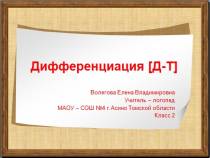
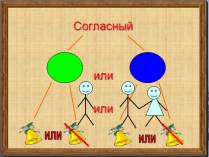
Target audience: for a speech therapist
A summary of the lesson on the "Letter to Santa Claus" is presented with elements of brain gymnastics. During the working hour, an atmosphere of interest-mystery is introduced. There is an acquaintance with the rules for writing a letter, as well as attention is paid to the dictionary Ozhegova. Children are active partners of the teacher throughout the correction. This approach meets current requirements.
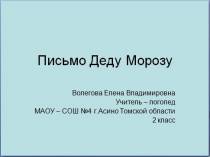
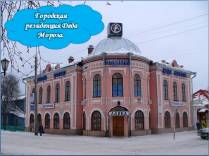
Target audience: for a speech therapist
The summary of the lesson on the topic "Differentiation of sounds of the NW" is presented using techniques of accompaniment by methods of motor correction. Ensuring the interaction of the right and left hemispheres is the basis intellectual development. In the lesson, children form the topic of the lesson, accept and save the educational task, and search for the necessary information. Form a self-esteem on the basis of successful activity.

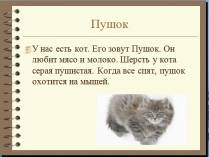
Target audience: for a speech therapist
Abstract individual lessons by differentiation sounds wsh. Designed for children of secondary school age. A colorful presentation helps maintain the child’s interest and attention throughout the session. In the lesson, the child has the opportunity to independently perform tasks on the computer.
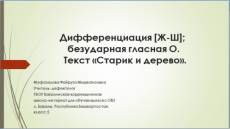
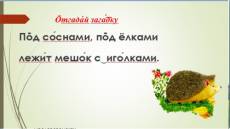
Target audience: for a speech therapist
CONSECT OF THE SUB-GROUP LOGOPEDIC EMPLOYMENT on the correction of violations of sound pronunciation
Topic: differentiation of sounds [r] and [r ’] in words.
Lexical theme: a journey to the city of professions.
Technologies: gaming (occupation, travel), information and communication.
Purpose: to develop the ability to distinguish the sounds [p] and [p ’] on the material of words.
Tasks:
Educational:
- train to distinguish the sounds [p] and [p ’] in words;
- develop auditory attention, phonemic analysis, synthesis and understanding;
- actualize and clarify the meaning of words on the lexical topic "Professions";
- develop the skill of word formation in a suffix way;
Corrective-developing:
- develop logical thinking, communication skills;
Educational:
- foster curiosity, cognitive activity and interest in learning activities generally.
![]()
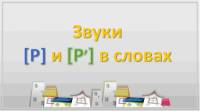
Target audience: for grade 4
Abstract of an individual lesson on the automation of sound Ш in the middle of a word. Designed for children of senior preschool and primary school age. The desire to help and treat Stepshka with a carrot supports the child's interest and attention throughout the lesson. Special tasks for schoolchildren train reading and writing skills.
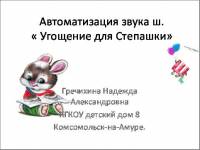

Target audience: for a speech therapist
Abstract of an individual lesson on differentiation sounds shh in syllables. Designed for children of senior preschool and primary school age. A colorful presentation helps maintain the child’s interest and attention throughout the session. In the lesson, the child has the opportunity to independently perform tasks on the computer.

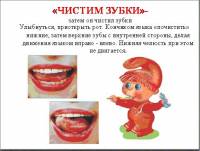
Purpose:Development of a clear differentiation of sounds [sh] in syllables and words.
Tasks:
- Correctional and educational:improve the reading technique on the material of syllabic tables, activate the vocabulary on the topics: "Shop", "Vegetables and fruits", "Toys".
- Corrective-developing:develop phonemic hearing and perception (sound and syllabic analysis and word synthesis), develop visual-spatial perception, articulatory motility, work on the development of the level of concentration and distribution of attention, auditory attention and memory, analytical thinking.
- Correctional and educational:to form skills of cooperation, a positive attitude towards participation in the lesson, a responsible attitude to completing tasks.
Equipment:
- magnetic letters
- syllables
- mirrors
- typesetting canvas
- syllable tables
- stickers with fruits and vegetables,
- pictures of the counter,
- Price tags
- cards - “money” - syllable schemes,
- toys
- chips for performing sound analysis,
- stickers with the image of animals.
Organizing time.
The game "Let's meet."
We get into a circle, hold on to the little fingers. The first player calls his name, the second - the name of the previous and his, etc.
The development of sound analysis and synthesis.
If you correctly complete the task, you will find out where we are going today.
Now I will tell you compliments, praise you. Your task is to highlight the third sound of each word and designate it with the corresponding letter:
- per Mnourishing
- st BUTwarriors
- before Gmoody
- etc BUTindented
- ra 3twisted
- etc ANDlying
- by Njaundiced
Children put on the board the word "STORE" from the letters of the magnetic alphabet.
Syllabic analysis.
What do we take with us to the store?
You have cards under the countertops. What is it? (Syllables).
Why do you think these are syllables? (Each part has a vowel).
Make up the words from these syllables:
- a bag
- purse
(A wallet is a small pocket bag for money.)
Why do we need these items?
Today, for your correct answers, I will give you such “money”. And why, you will find out a little later.
Characteristic of sounds "shh". Articulation gymnastics.
Highlight the first sound in the word "bag." Say it. In what position of the lips ("smile"), teeth ("Fence"), tongue ("Brushing your teeth")air stream (cold narrow air stream along the "groove") (Sound C - consonant, because there is a barrier, deaf - vocal cords do not work, solid.)
Highlight the third sound in the word "wallet." Say it. In what position of the lips ("Window"), teeth ("Brought together"), tongue ("cup")air stream ( strong, warm, wide). Characterize this sound. (Sound Ш - consonant, because there is a barrier, deaf - vocal cords do not work, always solid.)
What is the main difference between these sounds? (When pronouncing these sounds, the position of the tongue and lips is different.)
For the correct answers: cards - “money”<Приложение 1 >.
Lesson topic message.
Look carefully at the patterned canvas. Who can name the topic of the lesson?
Today, we will not only go to the store, but will also learn to distinguish the sounds of “shh”.
The development of phonemic hearing.
And for this we’ll work a little with the syllable table<Приложение 2 >. I call the syllable, your task is to find this syllable in the table as soon as possible and put your index finger on it.
Syllables: sho, sy, su, si, sha, so, shu, sa, shi.
The development of visual spatial perception.
So, we go to the store. What are the products that you see? (pear, peach, beetroot, cabbage, parsley, potato, radish, plum) <Приложение 3 >. What store did we come to?
The seller did not have time to lay out the products on the shelves<Приложение 4 >. Will we help her?
- put the pear on the upper shelf on the left;
- to the right of the pear - potatoes;
- under the potatoes - cabbage;
- put a radish on the second shelf on the right;
- above the radish - peach;
- between potatoes and peaches - plums;
- under a pear - beets;
- to the left of the radish is parsley.
Name what you put on the first shelf (pear, potato, plum, peach); to the second shelf (beets, cabbage, parsley, radish).
The seller is very grateful to you, you helped her lay the products on the shelves.
For the correct answers: cards - "money."
The development of analogous thinking.
Look carefully at the first shelf. What is superfluous there? (Potatoes.)
Why? (This is a vegetable, and everything else is fruit).
Look at the second shelf. What is superfluous there? (Parsley.)
Why? (In the word "parsley" the sound is "w", and in all other words - "c").
For the correct answers: cards - "money."
Differentiation of letters "s".
But in the store each product is signed and the price is indicated on it. Let us help the seller to sign price tags.<Приложение 5 >. But something is wrong here, what exactly? (The letters "c" and "w" are missing).
Insert the missing letters “c” or “w” into the words.
What are the words in which you entered the letter "c", "w".
You have completed the task. ( cards - "money")
Development of syllabic analysis.
We go to the next store. What store were we in? (At the toy store).
You have money, but you can only buy a toy whose name corresponds to the scheme on your card - “money”, ie in the name of the toy there should be as many syllables as in the diagram. Please note that the diagram shows in which syllable the sound “c” or “w” stands. You must clearly pronounce the word in syllables and give the "money" to the seller.
The development of sound analysis.
Choose any toy you bought. Run sound analysis of this word.
The result of the lesson.
What stores did we visit today? What other stores do you know?
What sounds did we call today most often? What is their main difference?
Reflection.
At the beginning of the lesson, I said that you are attentive, smart, diligent. I was not mistaken! You are well done!
Choose a sticker in the name of today's lesson that has a “w” sound in its name.
- The training system according to the Dalton plan - the organization of the educational process - Sergei V. Sidorov
- Internal differences, specialization of individual cities
- Consonant and letter th
- Not a single word: whom to work after philology
- Warning flags on the beach
- Abstract of speech therapy classes in elementary school
- Sound and Alpha Word Analysis

 Live journal
Live journal Facebook
Facebook Twitter
Twitter